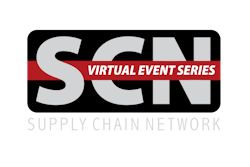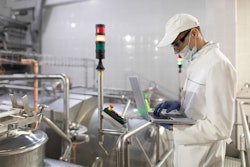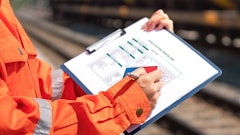
As people return to work in the “New Normal” post-COVID-19, it’s still apparent that we’re all in a constant state of flux with the good and bad, hope and despair.
And, food and beverage businesses are at the forefront of COVID-19 impact.
The almost instantaneous shift in purchasing and consumption driven by the stay-at-home orders drive the rapid closing of retail locations and sent immediate repercussions across the supply chain. It was an unseen territory in a matter of days. While we saw retail businesses make massive staff reductions as customer demand disappeared, distribution and transportation models re-set, while some frozen and packaged manufacturers and processors experienced unprecedented demand to support the shelter-in-place orders.
But, the food business has forever changed.
One of the primary success factors for return to work will be how technology and data is leveraged to protect worker health and safety. In the “New Normal,” companies will create a competitive advantage through their worker health and safety practices. Once viewed as required but non-strategic operations, moving forward, health and safety practices will make the difference in how companies survive and grow. One of the key attributes of successful strategies is how the activity system of a company, the collected and integrated processes and tasks are aligned to support the strategy.
For food and beverage companies, a key strategic element is how worker health and safety are integrated into activity systems. The good news is that food and beverage firms have adopted and utilized technology and data for supply chain and food safety, the new challenge now is to ensure the workers have the same aspect of capturing data, assessing risk and taking action.
The foundations of return to work will be built on three primary areas across the activity systems—awareness, communication and action.
Awareness has taken on new meaning as it extends across the entire organization and every single member. The physical state of an individual, both as it applies to themselves and others, is the foundational data elements guiding back-to-work. Privacy concerns around biometrics, symptoms and exposure are now secondary to providing and protecting the greater good. The EEOC recently updated its guidelines to allow temperature and screening to be captured and measured at the worker level.
With this awareness, communication will also accelerate and require continued publicly sharing information previously perceived as private. New ways of communicating will inevitably take hold to fill the need for this consistent and rapid connection. Finally, an action arising from awareness and communication will increase, enabling individuals and organizations to respond quickly and decisively to risk.
The single most powerful tools are technology and data to deliver awareness, communication and action. Our spring of hope comes from that we have been preparing and building the existing technology and data infrastructure for several years. It is an ironic and powerful coincidence that today’s technology and data has taken on an almost viral model on its own as it proliferates exponentially, cuts across demographic and social boundaries and leaves no area of the globe unaffected.
Technology and data will help companies return to work when we utilize and enable information with viral efficiency. Data must be captured and flow freely to enable action across all levels of an organization, while still protecting the privacy and information security. The problem is not the connections; the problem is the ability to respond quickly and deliver information that is trustworthy, secure, and timely to the right stakeholders at the right time. Information needs to move unhindered across all people, connecting them, in near real-time, and infecting them with awareness.
For food and beverage companies, return to work requires the following five key activities:
1) Technology and data to capture the current physical state of workers.
2) Technology and data to capture the current state of customers and guests.
3) Technology and data to enforce new operational guidelines and standards.
4) Technology and data to review and analyze activities and trends.
5) Technology and data to manage outcomes and hold people accountable.
First, the current physical state of workers is important to capture and interpret the data that surrounds workers and then determine risk at the individual and group level. At the immediate, tracking of worker specific physical data and location will be required. Biometric data (temperature) to ensure that workers are not creating or accepting undue risk will continue to be captured and combined with worker reported symptoms, exposure and demographic data (age, gender, pre-existing conditions) to guard individuals’ health and safety. Access to locations will be based on a physical and biometric review of workers and will inevitably extend to clients, customers, vendors and any other invited attendees within company locations.
Second, as people move from location to location, the ability to capture both their physical states and movements will be required. While an individual worker may report to the same location repeatedly, business guests’ and customers will move across multiple locations. An ability to track and assess the guests physical state and movements will be required to gain access and interaction moving forward.
Third, physical distancing, disinfecting, personal protective equipment and other tools and processes will need to be implemented to enforce operational standards and guidelines. Organizations are now implementing COVID-19 distancing at all locations, and it’s only a short matter of time when technology will be able to reinforce and support these guidelines.
Fourth, reporting and data aggregation becomes incredibly important. The balance between the individual and the group is necessary to understand and avoid risk. Analytics and AI software and apps will be the enabler to give organizations reporting tools for analyzing and utilizing data. Balancing data privacy and access will be key for adoption and trust.
Fifth, a company’s ability to work closely with others and mitigate risk will require technology and data to monitor outcomes and hold people accountable. Having an objective, evidence-based measures will allow decision-makers to lead with transparency and make decisions that optimize the allocation of resources.
Again, our spring of hope is that we have the means to connect people and share information. Mobile devices and the corresponding infrastructure are specifically designed to create a one-to-many model of data and communication. Using existing infrastructure to rapidly deploy and track new data sources and connections is required.
Data and technology will help workers and businesses come back stronger than ever, technology and data will create insight, insight will create worker action and worker action will avoid risk. When delivered accurately and efficiently, this model and approach will allow companies and workers to return to work safely.



















